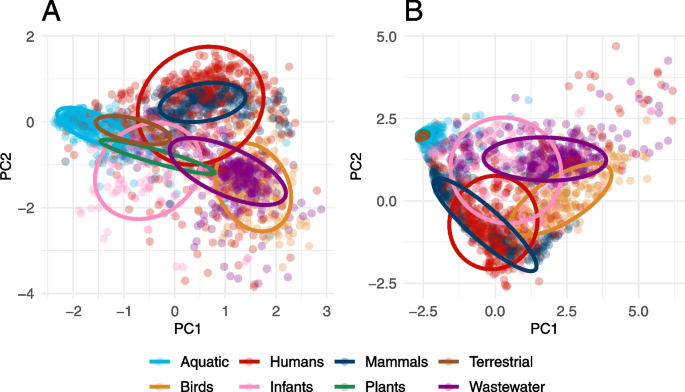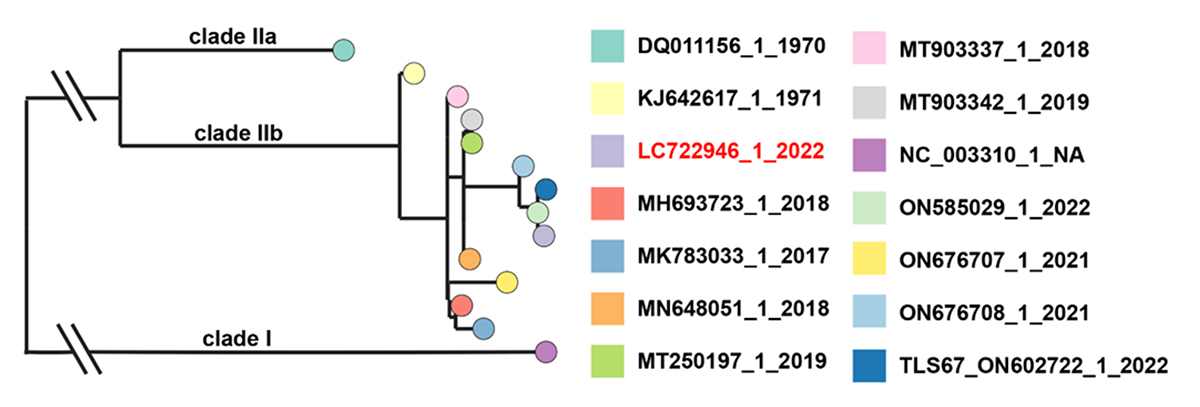2023-06-07 チャルマース工科大学
◆この研究は、世界的な健康への脅威である抗生物質耐性についての理解を深める必要性を強調しています。抗生物質耐性の新たな形態の遺伝子が、人間の微生物叢や病原性細菌にも広く存在していることが明らかになりました。今後の医療現場での感染症拡大を防ぐために、新たな耐性遺伝子をリスク評価に組み込む必要があります。
<関連情報>
- https://news.cision.com/chalmers/r/previously-unknown-antibiotic-resistance-widespread-among-bacteria,c3778537
- https://microbiomejournal.biomedcentral.com/articles/10.1186/s40168-023-01479-0
潜在的な抗生物質耐性遺伝子は、ヒト、動物、環境のマイクロバイオームにおいて豊富で、多様で、移動可能である。 Latent antibiotic resistance genes are abundant, diverse, and mobile in human, animal, and environmental microbiomes
Juan Salvador Inda-Díaz,David Lund,Marcos Parras-Moltó,Anna Johnning,Johan Bengtsson-Palme & Erik Kristiansson
Microbiome Published:08 March 2023
OI:https://doi.org/10.1186/s40168-023-01479-0

Abstract
Background
Bacterial communities in humans, animals, and the external environment maintain a large collection of antibiotic resistance genes (ARGs). However, few of these ARGs are well-characterized and thus established in existing resistance gene databases. In contrast, the remaining latent ARGs are typically unknown and overlooked in most sequencing-based studies. Our view of the resistome and its diversity is therefore incomplete, which hampers our ability to assess risk for promotion and spread of yet undiscovered resistance determinants.
Results
A reference database consisting of both established and latent ARGs (ARGs not present in current resistance gene repositories) was created. By analyzing more than 10,000 metagenomic samples, we showed that latent ARGs were more abundant and diverse than established ARGs in all studied environments, including the human- and animal-associated microbiomes. The pan-resistomes, i.e., all ARGs present in an environment, were heavily dominated by latent ARGs. In comparison, the core-resistome, i.e., ARGs that were commonly encountered, comprised both latent and established ARGs. We identified several latent ARGs shared between environments and/or present in human pathogens. Context analysis of these genes showed that they were located on mobile genetic elements, including conjugative elements. We, furthermore, identified that wastewater microbiomes had a surprisingly large pan- and core-resistome, which makes it a potentially high-risk environment for the mobilization and promotion of latent ARGs.
Conclusions
Our results show that latent ARGs are ubiquitously present in all environments and constitute a diverse reservoir from which new resistance determinants can be recruited to pathogens. Several latent ARGs already had high mobile potential and were present in human pathogens, suggesting that they may constitute emerging threats to human health. We conclude that the full resistome—including both latent and established ARGs—needs to be considered to properly assess the risks associated with antibiotic selection pressures.


